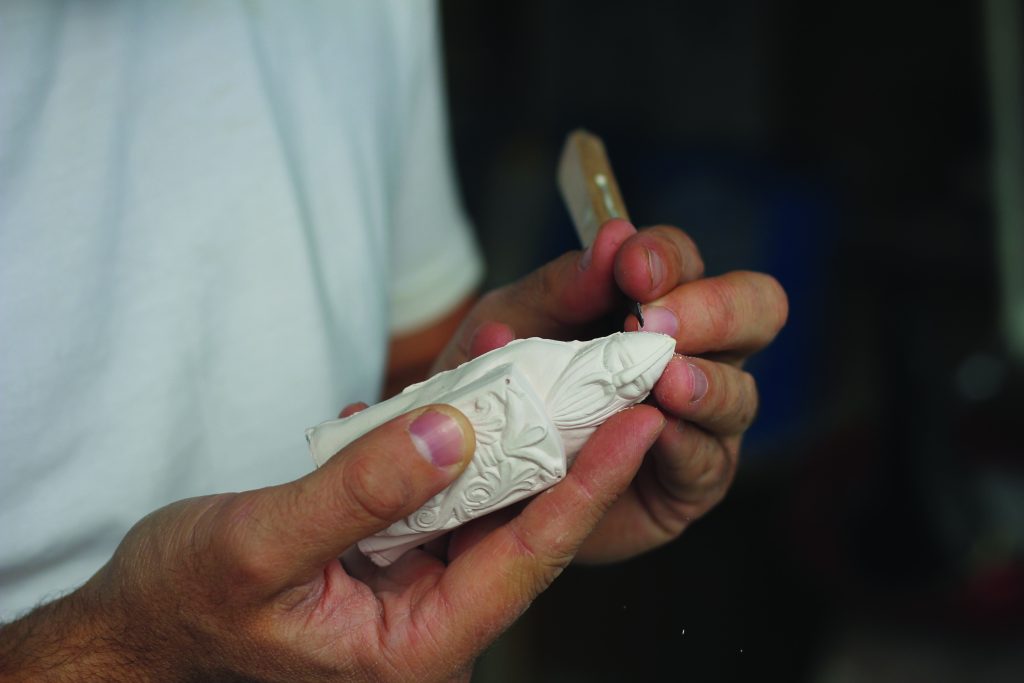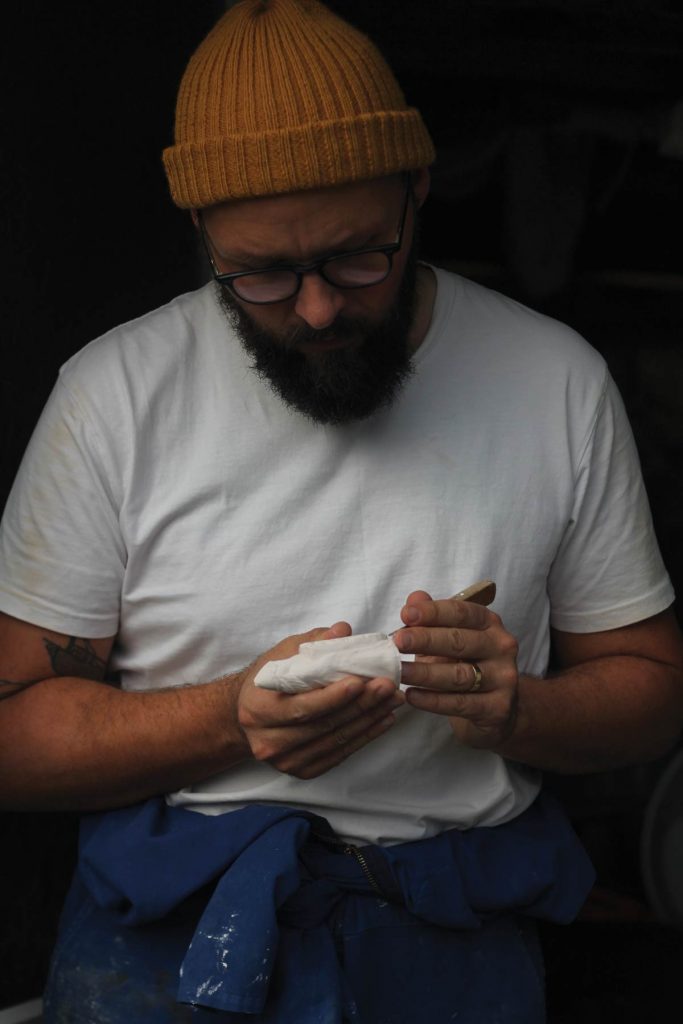Check Mate
Pottery is an art bound in its history. It’s one of mankind’s oldest inventions after all, having emerged from the Neolithic period around 12,000 years ago. The artform has travelled across the world and time, taking prime mantle space at grandma’s place alongside decorated flower pots, a prehistoric era also.
New Zealand-based Taus Ceramics have changed that by creating some pretty cool, durable and long-lasting pieces that play with what pottery can do. Designer and pottery-guru, Tim Grocott, started pottery classes in 2009 and created a business from his home studio. His range is ever growing and impressive, be it his hand-sculpted mugs or hip-flasks or even his beautifully crafted chess sets, the man has talent. An idea that blossomed in 2016, the chess set is eloquently crafted with techniques and a design that pay respect to the history of the game.
We got to sit down with Tim to talk to him about his craft.
How did you first become interested in ceramics?
I first took a pottery class in 2009 after studying industrial design at Massey. One of my projects involved researching slipcasting techniques and I called Auckland Studio Potters to ask a million stupid questions.
When I stopped my study, I picked up on night classes at Auckland Studio Potters. In the first semester, I’d bought my own wheel and converted the little garden shed to a pottery.
What inspires your art?
I’m most inspired by the commercial side of manufacturing. I like to have control over the small details. I do love organic, hand-made work, but when it’s my own I fuss over the little imperfections. However slipcasting lets me make it perfectly once, and then I can create that same piece forever. I can then add variety with colours and glazes.
Mould making also allows me to do so much more than if I had to make everything by hand. For example my shark sculpture could not be made any other way.

What drew you to creating a chess set?
To begin with, I thought it would be a good challenge to attempt to make chess pieces on the potters wheel. I made one set but wasn’t happy with the hand-made nature of it.
I decided to try sculpting the figures by hand and make some moulds, from there it really spun out of control. I’d never done that fine level of model making before and loved creating all the little details in the faces and clothing.
Was there lots of research involved?
In the beginning, there wasn’t. I started with the King piece because I could see it in my head. While I was developing that, a friend gave me a book about the Lewis Chess Men and I found that fascinating. After that, I picked up a few more books about the history of chess and how the game has changed over time. I became obsessed.
One of the most interesting things about the game is how little it has changed since the 6th century. Small changes become quite major. For example, when the game was introduced to Islamic countries it was forbidden to make representational sculptures, so they made their own chess sets that evoked the different pieces but were completely abstract. There is a good example from Iran around the 12th century that looks entirely modern.
Are you a chess player yourself?
Funnily enough, not at all. I’m terrible at chess.
What was the hardest part of putting the set together?
The long process of researching, designing and making the pieces was a joy (although it did take three years). I think the most difficult thing was figuring out when it was finished. It had been in my head for so long that it was difficult to finally call an end to it.
How do you stay motivated in your home studio?
Pottery is my part time job. I also work in television, so I don’t get enough time in the studio to get bored.

Does your studio play a role in your creativity?
My studio is like a little cave. The nicknacks are starting to close in around me. It’s cramped, but it means that if I need something to help finish a mould or complete a model, I can usually find what I need within arm’s reach.
How long would you say you work on a piece?
Some of the pieces came together very quickly. For example, the Bishop was done in a day, but I agonised over the Rook. I made three very different iterations of that one before I was happy with it.
Now that the set is in production, each piece probably gets an hour of hands on time, between casting, fettling, finishing, sanding and then applying the cork bases.
What do you do outside of ceramics?
I’m a television editor.
Do you have any projects lined up that we can know about?
I’ve got an idea for an incense burner in mind that I’m itching to get out. I won’t say any more at this stage though.
What’s the best piece of advice you’ve been given?
When I got my first pottery wheel at home, my teacher told to allocate a pot smashing wall.
So much of the process in pottery is out of your hands and is super frustrating when it goes wrong… I’ve used my pot smashing wall a lot.

